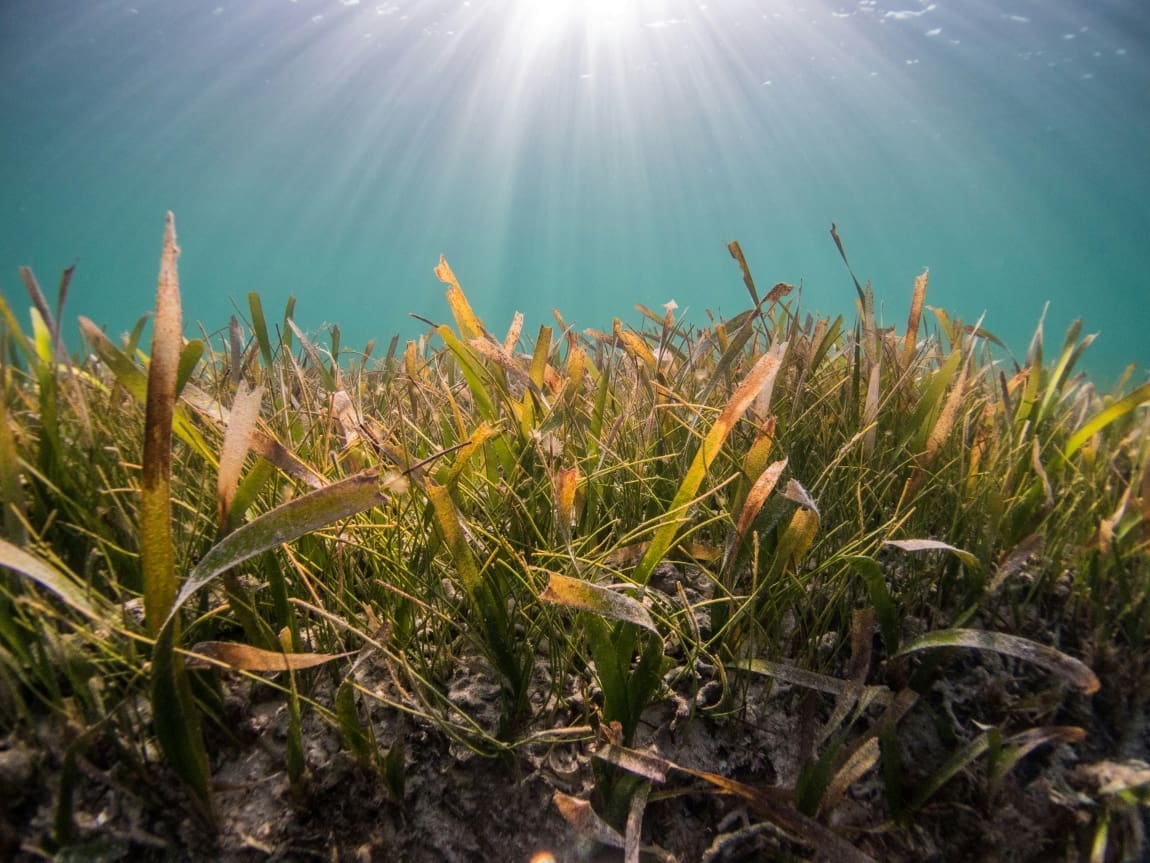Researchers predict that climate change will drive a substantial redistribution of brown seaweeds and seagrasses at the global scale. The projected changes are alarming due to the fundamental role that seaweeds and seagrasses play in coastal ecosystems, providing evidence of the pervasive impacts of climate change on marine life.
In a collaborative study between the University of Helsinki and the EU Joint Research Centre, researchers for the first time, have modelled the future distribution of brown seaweeds and seagrasses at the global scale. They predict that by 2100 climate change will drive a substantial redistribution of both groups globally: Their local diversity will decline by 3–4% on average and their current distribution will shrink by 5–6%. More notably, the preferred habitat for both brown seaweeds and seagrasses will undergo a substantial global reduction (78–96%) and will shift among marine regions, with potential expansions into Arctic and Antarctic regions.
“We find it alarming that coastal areas worldwide will become dramatically less hospitable for habitat-forming macrophytes, as this might have severe and widespread impacts on coastal ecosystem functioning at the global scale. Interestingly, while global percentual declines in diversity show similar trends for seagrasses and brown macroalgae, the regional patterns are strikingly different between the two groups.” says Federica Manca the lead author of the study from the University of Helsinki.
Why should we care about seaweeds and seagrasses?
Brown seaweeds and seagrasses provide important ecological and socio-economic services in coastal areas worldwide: they support coastal biodiversity and fisheries, ensure coastal protection, participate in ocean nutrient recycling, contribute to carbon sequestration and climate change mitigation.
As climate change is severely threatening macrophyte habitats and the services they provide, we urgently need to understand how both brown seaweeds and seagrasses will respond to changing climatic conditions in the coming decades.
While previous studies have modelled the future distribution of these habitat-forming macrophytes focusing on regional or local scales only and on a limited number of species. In contrastthis study is the first to provide a comprehensive view of the effects climate change on more than 200 species of brown seasweeds and seagrasses at the global scale.
The results show that the redistribution of these habitat-forming marine macrophytes will be geographically heterogeneous, and highlights the regions where the loss of macrophyte diversity and habitat will be most severe, such as the Pacific coast of South America for brown seaweeds, and the coast of Australia for seagrasses.
Additionally, researchers identified macrophyte species that will be more severely affected by climate change, like the Atlantic seaweed Laminaria digitata. The findings can help identify target areas and species for conservation, potentially buffering the impact of climate change.
Surprisingly, and contrary to our expectations, our models did not predict severe losses of brown seaweed or seagrass diversity in the tropics but rather at intermediate and high latitudes, such as along the Atlantic coasts of Europe and in the Baltic Sea. This indicates that end-of-century climatic conditions in these regions might exceed the tolerance limits of resident macrophyte species. The Baltic Sea is at the forefront in the rate at which climate change is influencing the ecosystem.
“Combined with a legacy of multiple other disturbances (such as eutrophication) and low species diversity with only a few brown aseaweeds and seagrasses, the Baltic Sea is exceptionally vulnerable to these predicted changes.” says Alf Norkko, professor at the Tvärminne Zoological Station, University of Helsinki.
“Another surprising—and alarming—result is the dramatic loss of highly suitable habitat for both macroalgae and seagrasses globally: Coastal areas worldwide will become substantially less hospitable for habitat-forming macrophytes”, adds Dr. Mar Cabeza from the Global Change and Conservation Group at the University of Helsinki.
The disappearance of these habitat-forming macrophytes can trigger cascading effects on other species, compromising the integrity of entire ecosystems and undermining ecological and socio-economic services important to human society. Thus, forecasting changes in the distribution of habitat-forming species is crucial to raise awareness of climate change impacts and foster conservation efforts accordingly.
“Our findings confirm, once again, that climate change might have profound impacts on ecosystems, promoting rapid and, most often, detrimental changes to the diversity and resilience of natural communities. In fact, habitat-forming macrophytes support biodiversity through an exceptional diversity of ecological interactions. Hence, their projected loss and redistribution might lead to unpredictable cascading effects, most likely resulting in the local extinction of many associated species.”, says Giovanni Strona from the EU Joint Research Centre.
More information: Federica Manca, Lisandro Benedetti-Cecchi, Corey J. A. Bradshaw, Mar Cabeza, Camilla Gustafsson, Alf M. Norkko, Tomas V. Roslin, David N. Thomas, Lydia White & Giovanni Strona, ‘Projected loss of brown macroalgae and seagrasses with global environmental change’, Nature Communications (15, 5344; 2024); DOI: 10.1038/s41467-024-48273-6. University of Helsinki Press Release. Featured image credit: Benjamin L. Jones | Unsplash




